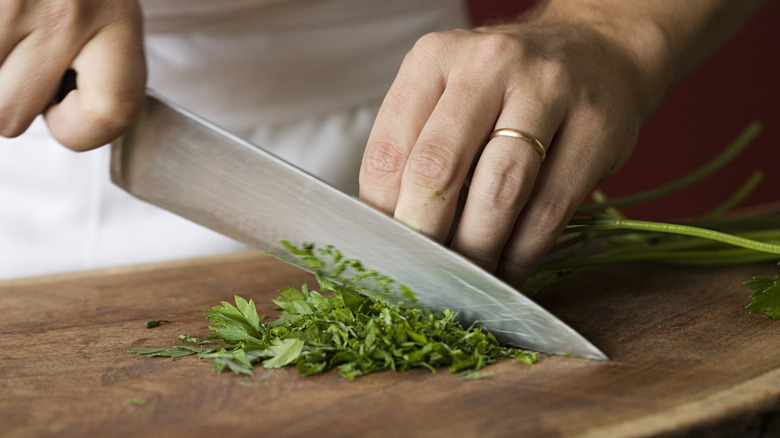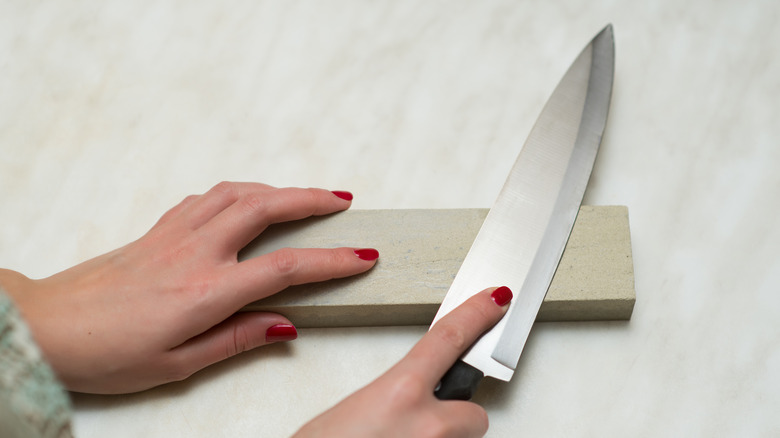The Sound That's A Sign It's Time To Sharpen Your Knives
A drawer full of razor-sharp knives may seem dangerous, but in reality, a dull knife is much more dangerous than a sharp one. That's because a blade with a blunt edge is harder to use and requires more force and pressure to do its job, increasing the chances of slipping and accidentally cutting yourself. This leads to another reason dull knives just don't cut it: cuts from dull knives actually take longer to heal than those from a sharp knife.
Once you've put in the kitchen time developing your knife skills and techniques, your knives will have likely dulled. This is even more likely if you habitually stick your cutting tools into the dishwasher after cooking. Since knives dull over time with use, it may not be immediately apparent to home cooks when it's time to sharpen them — but there's an auditory signal to listen for that lets you know it's time to hone your knife.
A crunching sound through vegetables
Experts say that as soon as you hear your knife produce a crunching sound as it cuts through your food, that's a surefire sign that the knife is dull. If you're unsure, online knife shop F.N. Sharp suggests you try the bell pepper test. If your knife doesn't cut through a bell pepper smoothly and cleanly, instead producing a cracking sound, you've got your answer. This sound is caused by the rigid cuts that are made by a dull knife edge.
If the crunching or crackling sound isn't clear enough for you, there are a few other tests to tell if your knife needs honing. The tomato test involves running a knife with just a tiny bit of pressure along the skin horizontally — if the subtle motion cuts through the skin, you're still working with sharp edges. If you need to add more pressure just to indent the tomato skin, you've got a dull knife. Finally, a food-free option to determine whether or not your knife is dull is to use your fingernail: if you apply the blade at an angle, it'll stick to your fingernail, whereas dull ones will slide right off.

